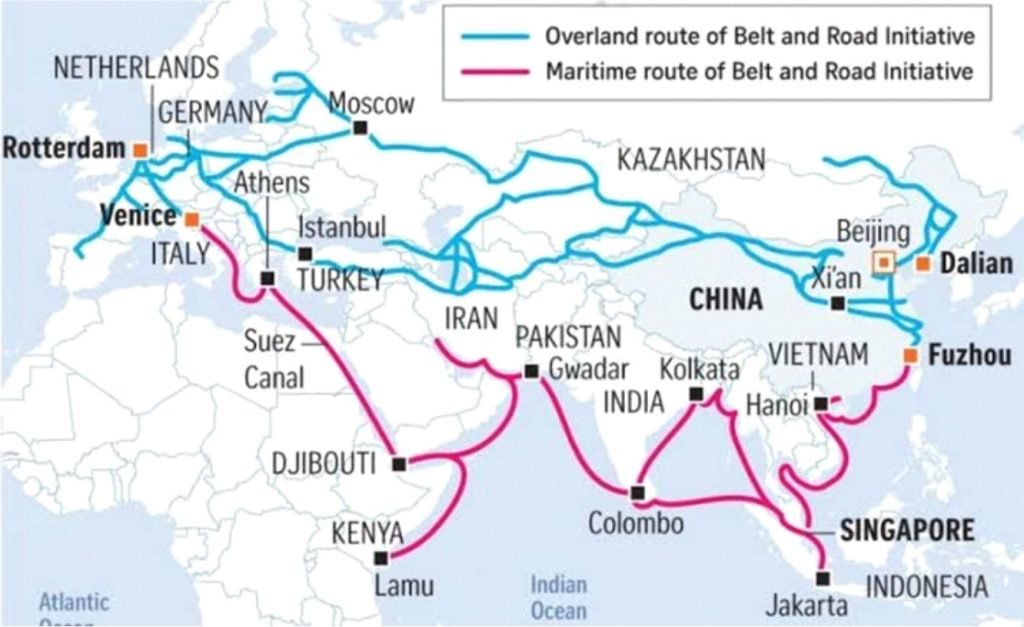Minimum Legal Drinking Age
Indian Express
GS 2: Health, Human Resource, Government Policies & Interventions
Context:
- The Haryana government has amended its Excise Act, reducing the legal age to purchase, sell or consume liquor from 25 years to 21 years. The government’s reasoning for bringing down the age to 21 is that “many of the other states have prescribed lower age limits”.
About:
- Alcohol in India is on the State list, meaning revenue comes from this into the State.
- The minimum age for purchasing alcohol is 18 in Goa, Himachal Pradesh, Karnataka, Sikkim, and Puducherry.
- 21 years in Andhra Pradesh, Arunachal Pradesh, Assam, Chhattisgarh, Jammu and Kashmir, Jharkhand, Kerala, Madhya Pradesh, Maharashtra, Mizoram, Orissa (Odisha), Rajasthan, Tamil Nadu, Telangana, Tripura, Uttarakhand, Uttar Pradesh, and West Bengal, 25 (now 21 years) in Haryana, Meghalaya, Punjab, Delhi
- Sale of alcohol is prohibited in states including Bihar, Gujarat, Manipur, Mizoram, Nagaland and Lakshadweep.
Pros:
- Prohibiting this age group from drinking in bars, restaurants, and other licensed locations causes them to drink in unsupervised places such as fraternity houses or house parties where they may be more prone to binge drinking and other unsafe behavior.
- If the drinking age was lowered, alcohol consumption could be less taboo for adults.
- Lowering the drinking age would also reduce the number of alcohol-related accidents among underage drinkers. Many underage drinkers will not seek medical attention, no matter how severe injuries may be, because they fear the legal consequences of their actions.
- Underage drinking will occur no matter what the legal drinking age is, and lowering the drinking age to 21 will ultimately lead to safer consumption habits for young adults.
Cons:
- Alcohol consumption can interfere with development of the young adult brain’s frontal lobes, essential for functions such as emotional regulation, planning, and organization.
- When alcohol consumption interferes with this early adult brain development, the potential for chronic problems such as greater vulnerability to addiction, dangerous risk-taking behavior, reduced decision-making ability, memory loss, depression, violence, and suicide is greater.
- Any move toward increasing alcohol availability to young adults must consider its adverse effects, including traffic fatalities, unplanned pregnancy and crime.
Conclusion:
- Policies like increased public transit availability, access to birth control and educational initiatives focused on harm reduction rather than abstinence have been shown to mitigate the detrimental effects of alcohol use by young adults. Lowering the drinking age will only succeed as part of a comprehensive set of policies that address the unintended consequences.
Big decline in China’s BRI Investments, Cash Grants to Africa: Report
Business Standard
GS 2: International Relations
Context:
- According to China-based think-tank Green BRI, investments in China’s much-touted Belt and Road Initiative (BRI) have fallen by 54% since 2019 and Beijing is no longer doling out hard cash for projects in Africa, amid criticism over infrastructure debt and loan defaults.
About:
- The BRI is a multi-billion-dollar initiative launched by Chinese President Xi Jinping when he came to power in 2013.
- It aims to link Southeast Asia, Central Asia, the Gulf region, Africa and Europe with a network of land and sea routes.
- Xi launched BRI to undertake big infrastructure projects in the world which in turn would also enhance Beijing’s global influence.

- More than 100 countries signed agreements with China to cooperate in BRI projects like railways, ports, highways and other infrastructure.
- Beijing’s multibillion-dollar BRI has seen its investments in the 138 participating countries slide 54 per cent from 2019 to USD 47 billion last year.
- Scuppered deals and the COVID-19 pandemic contributed to the fall, but Beijing has also adopted a more cautious approach to the development of these overseas projects.
Karnataka Protection of Right to Freedom of Religion Bill, 2021
The Hindu
GS 2: Government Policies and Interventions
Context:
- Recently, the Karnataka Protection of Right to Freedom of Religion Bill, 2021 was cleared by the Karnataka Cabinet.
About:
- The Bill insists that any person intending to convert to another religion will have to inform the district magistrate at least thirty days in advance.
- The person executing the conversion must also give a notice one month in advance, following which an inquiry will be conducted by the district magistrate through the police to establish the real intent of conversion.
- Post conversion, the district magistrate has to inform revenue authorities, the social welfare, minority, backward classes and other departments of the conversion, who will, in turn, take steps with respect to the entitlements of the person in terms of reservations and other benefits.
- The bill says that Any marriage which has happened for the sole purpose of unlawful conversion or vice-versa by the man of one religion with the woman of another religion, either by converting himself before or after marriage or by converting the woman before or after marriage, shall be declared as null and void by the family court or where the family court is not established, the court having jurisdiction to try such case, on a petition presented by either party thereto against the other party of the marriage.
Filing complaint and punishments:
- Complaints of conversions can be filed by family members of a person who is getting converted, or any other person who is related to the person who is getting converted, or any person associated with the person getting converted.
- The Bill proposes a maximum punishment of 10 years of imprisonment for forcible conversion of persons from Scheduled Caste, Scheduled Tribe communities, minors and women to another religion.
- The offence of conversion is cognisable and non-bailable and will attract a jail term of three to five years and a fine of Rs. 25,000 for people found violating the law and a jail term of three to 10 years, and a fine of Rs. 50,000 for people converting minors, women and persons from the SC and ST communities.
Himalayan Glaciers Melting
The Week
GS 3: Environment and Conservation
Context:
- Glaciers in the Himalayas are melting at an “exceptional” rate because of global warming, threatening the water supply of millions of people in Asia, according to a study.
- The study, published in the journal Scientific Reports, also shows that Himalayan glaciers are shrinking far more rapidly than glaciers in other parts of the world.
About:
- The researchers found that the Himalayan glaciers have lost ice ten times more quickly over the last few decades than on average since the last major glacier expansion 400-700 years ago, a period known as the Little Ice Age.
- They calculated that the glaciers have lost around 40 per cent of their area — shrinking from a peak of 28,000 square kilometres (km2) to around 19,600 km2 today.
- During that period they have also lost between 390 cubic kilometres (km3) and 586 km3 of ice.
- The water released through that melting has raised sea levels across the world by between 0.92 millimetres (mm) and 1.38 mm.
- This acceleration in the rate of loss has only emerged within the last few decades, and coincides with human-induced climate change.
- The Himalayan mountain range is home to the world’s third-largest amount of glacier ice, after Antarctica and the Arctic and is often referred to as ‘the Third Pole’.
- The acceleration of melting of Himalayan glaciers has significant implications for hundreds of millions of people who depend on Asia’s major river systems for food and energy. These rivers include the Brahmaputra, Ganges and Indus.
- The team used satellite images and digital elevation models to produce outlines of the glaciers’ extent 400-700 years ago and to reconstruct’ the ice surface.
- The satellite images revealed ridges that mark the former glacier boundaries and the researchers used the geometry of these ridges to estimate the former glacier extent and ice surface elevation.
- Comparing the glacier reconstruction to the glacier now, determined the volume and hence mass loss between the Little Ice Age and now.
- The Himalayan glaciers are generally losing mass faster in the eastern regions — taking in east Nepal and Bhutan north of the main divide.
- The study suggests this variation is probably due to differences in geographical features on the two sides of the mountain range and their interaction with the atmosphere — resulting in different weather patterns.
- Himalayan glaciers are also declining faster where they end in lakes, which have several warming effects, rather than where they end on land.
- The number and size of these lakes are increasing so continued acceleration in mass loss can be expected.
- Glaciers which have significant amounts of natural debris upon their surfaces are also losing mass more quickly, contributing around 46.5 per cent of total volume loss despite making up only around 7.5 per cent of the total number of glaciers.
- While humans must act urgently to reduce and mitigate the impact of human-made climate change on the glaciers and meltwater-fed rivers, the modelling of that impact on glaciers must also take account of the role of factors such as lakes and debris.



